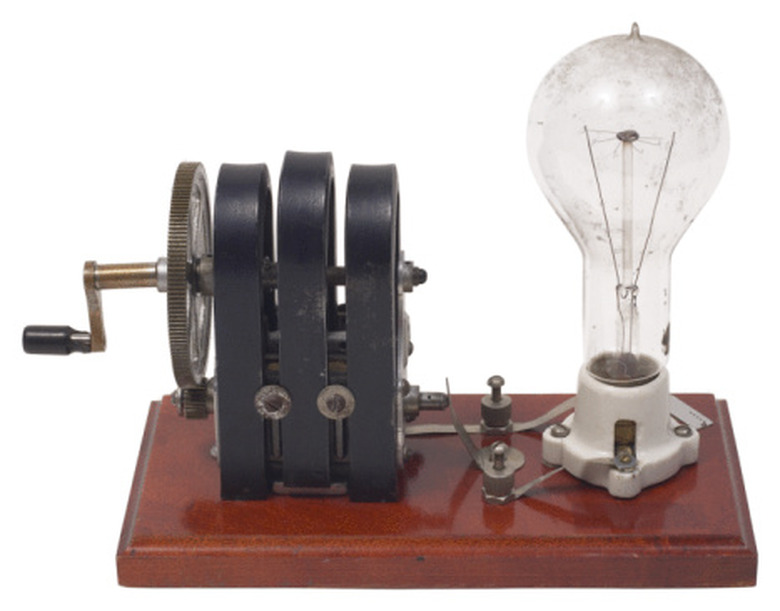How To Calculate Induced Armature Voltage
An armature is the rotating solenoid inside of DC machines. Engineers use DC machines to build a generator or a motor. When it's used as a generator, a gas turbine or a diesel engine rotates the armature and the armature generates electric power. When it's used as a motor, electric power rotates the armature and the armature generates the mechanical energy needed to operate a motor. In both cases, the armature rotates in a magnetic field to produce the required output.
Step 1
Find the total number of conductors on the armature, or "Z." Refer to the armature design specifications.
Step 2
Find the speed of rotation of the armature, or "N," in revolutions per minute or rpms. Refer to the armature design specifications.
Step 3
Find the magnetic flux per pole on the armature, or "M," in units of Webers. Refer to the armature design specifications.
Step 4
Calculate the induced armature voltage using the formula Eo = (Z N M)/ 60 where Eo is the induced armature voltage. For example, if Z is 360 conductors, N is 1200 rpm and M is 0.04 Wb, then [(360)(1200)(0.04)]/60 equals 288 volts.
Cite This Article
MLA
Chestnut, Dwight. "How To Calculate Induced Armature Voltage" sciencing.com, https://www.sciencing.com/how-8605226-calculate-induced-armature-voltage/. 7 August 2017.
APA
Chestnut, Dwight. (2017, August 7). How To Calculate Induced Armature Voltage. sciencing.com. Retrieved from https://www.sciencing.com/how-8605226-calculate-induced-armature-voltage/
Chicago
Chestnut, Dwight. How To Calculate Induced Armature Voltage last modified March 24, 2022. https://www.sciencing.com/how-8605226-calculate-induced-armature-voltage/
